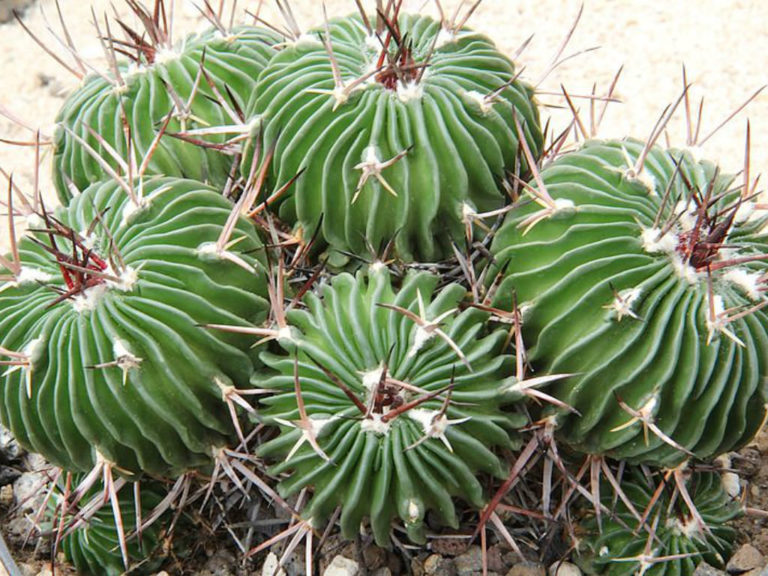The Stenocactus, often euphemistically referred to as the “brain cactus” due to its unique contorted form, encapsulates the allure of cacti with its fascinating morphology and care requirements. This guide will delve into the captivating world of Stenocactus, providing essential insights into their varieties, cultivation practices, watering regimen, and more. Whether you’re an avid collector or a casual green thumb, understanding this genus will enhance your gardening experience.
Stenocactus belongs to the Cactaceae family and predominantly flourishes in the arid landscapes of Mexico. Their intriguing shapes and delightful resiliency make them a sought-after addition to many succulent collections. Let’s explore the defining characteristics of these intriguing plants and the meticulous care they require.
Herein are the essential facets to consider when cultivating Stenocactus species, ensuring a thriving environment for these remarkable succulents.
Identifying the Many Faces of Stenocactus
Within the Stenocactus genus resides an eclectic array of species, each exhibiting distinctive traits that captivate botanists and hobbyists alike. Here are some notable varieties:
- Stenocactus multicostatus: Often considered the quintessential Stenocactus, this species is immediately recognizable by its prominent ribs and stunning structure. The grayish-green hue and the formation of vibrant yellow flowers during the blooming season make it a favorite among collectors.
- Stenocactus crispatus: Known colloquially as the “crooked cactus,” this species is lauded for its undulating form, with ribbed surfaces swept elegantly into irregular shapes. Its fascinating appearance is a result of environmental adaptations, which allow it to conserve water while maximizing sunlight exposure.
- Stenocactus thatcheri: This species is revered for its striking, elongated form. Characterized by deep grooves and a robust physique, it produces spectacular blooms that vary in color, bringing visual poetry into any thriving succulent garden.
- Stenocactus varsovicekianus: A less common variety, Stenocactus varsovicekianus showcases a more compact structure compared to its counterparts. Its rich green color, coupled with vibrant yellow flowers, provides a charming display, making it an attractive option for tabletop gardens.
Each variety of Stenocactus presents unique visual and cultural qualities, allowing growers to select plants that resonate best with their specific tastes and aesthetic needs.
Creating the Perfect Haven: Stenocactus Care
Cultivating Stenocactus necessitates a nuanced understanding of their environmental preferences and needs. The following guidelines will provide a comprehensive framework for successful cultivation.
- Soil Selection: The foundation for healthy Stenocactus growth lies in an appropriate potting mix. Opt for a well-draining cactus soil, ideally a blend containing perlite or coarse sand. These amendments facilitate aeration, enabling the roots to breathe and preventing waterlogged conditions that could lead to root rot.
- Lighting Requirements: Stenocactus thrives in bright, indirect sunlight, though they can tolerate direct sunlight, particularly in cooler climates. Aim for six hours of filtered light daily. A south-facing window is often ideal for indoor environments; however, such exposure should be moderated during the scorching summer months to prevent sunburn.
- Watering Regimen: Watering practices are vital in ensuring the longevity of your Stenocactus. During the growing season (spring and summer), water thoroughly, allowing the soil to dry completely between watering sessions. This practice mimics their natural habitats, where precipitation is scarce and sporadic. In contrast, reduce watering significantly during autumn and winter dormancy, dampening the soil only marginally.
- Fertilization Strategy: Nourishing Stenocactus with fertilizer is not obligatory, yet a diluted cactus-specific fertilizer can be beneficial during the growing period. A half-strength application monthly in spring and summer will provide essential nutrients, promoting robust growth and vibrant blooms.
- Potting Practices: Occasionally, repotting may be necessary as your Stenocactus matures. Choose a pot that provides adequate drainage and allows a little room for the roots to expand. Handle the cactus with care, utilizing gloves or tongs to avoid injury from spines.
- Propagation Possibilities: For those eager to expand their Stenocactus collection, propagation is achievable through offsets or seeds. Offsets can typically be removed and replanted, while seed propagation will require a controlled environment with moist soil and warmth for optimal germination.
- Pest and Disease Management: Although Stenocactus are relatively hardy plants, they can succumb to pests such as mealybugs and spider mites. Regular inspections can help identify infestations early. Natural remedies, including insecticidal soap or neem oil, can manage pest populations effectively. Fungal issues may arise if overwatered; thus, ensuring proper soil moisture is critical.
Artistry in Aesthetics: Styling Your Stenocactus
Integrating Stenocactus into your indoor or outdoor spaces serves not only as a horticultural endeavor but also as a decorative pursuit. Here are creative ideas to maximize their aesthetic appeal:
- Container Choices: Select visually striking pots that complement the unique shapes of the Stenocactus. Textured ceramics or minimalist concrete pots can enhance their natural beauty while providing adequate support.
- Garden Arrangement: When juxtaposing Stenocactus with other succulent species, ensure that varietals with similar aesthetic preferences are grouped together. Play with different heights, colors, and textures to create a visually engaging tableau.
- Indoor Displays: For indoor spaces, utilize stands or tiered shelving to exhibit various Stenocactus species at differing heights. This arrangement not only optimizes light exposure but creates a dynamic visual flow.
- Seasonal Decor: The seasonal blooms of Stenocactus provide an exquisite opportunity for seasonal decor. Consider placing them as centerpieces during gatherings or using them to enhance outdoor festivities.
In Conclusion: The Enduring Allure of Stenocactus
The Stenocactus genus stands as a testament to nature’s splendor, embodying resilience and beauty in its myriad forms. Understanding the various species, proper care, and aesthetic integration will ensure that these remarkable cacti thrive in your care. By providing an environment that mirrors their natural habitats, your Stenocactus will flourish, bringing joy and fascination into your home or garden.

Leave a Comment